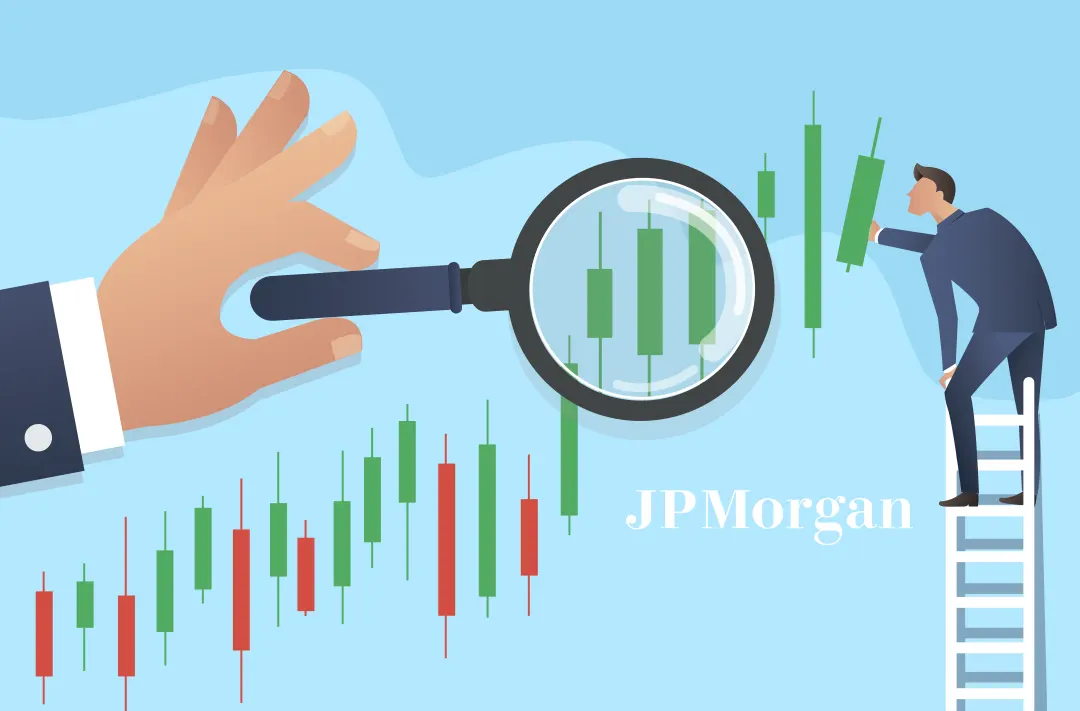“There won’t be a quick reversal.” When the crypto market will return to bullish growth phase
Experts told about the prospects of cryptocurrencies in the coming months and estimated when and under what circumstances the market can reach the bottom and go up

01.07.2022
248
8 min
0
The material is not an investment recommendation and is published for information purposes only.
Last November, the crypto sphere was in a state of euphoria. Bitcoin reached an all-time high (ATH) of $69 000, and the total capitalization of the crypto market exceeded three trillion dollars — four times more than two years before. Venture capital investments were pouring in and new unicorns were appearing in the market one after another.
As of July 1, the cryptocurrency market is valued at $853 billion and nearly all tokens, including BTC and ETH, have lost more than half of their value since the start of the year, with some cryptocurrencies falling 90% from their peak prices. Shares of the Coinbase exchange have fallen to $49 from their January peak of $251. Quotes from publicly traded mining companies are also in heavy drawdowns. The volume of the non-fungible token (NFT) market, which rose to $23 billion last year, showed values below $1 billion in June for the first time since June 2021, according to DappRadar. Leading crypto companies have begun cutting employees to optimize costs.
Having started as a temporary drawdown amid fears around inflation and geopolitical tensions, the market situation developed into a new phase of the crypto winter, the most significant events of which were the collapse of the Terra ecosystem and the bankruptcy of one of the largest cryptocurrency hedge funds, Three Arrows Capital, whose positions worth hundreds of millions of dollars were liquidated by a series of margin calls.
Miners and lenders
Analysts at financial conglomerate JPMorgan Chase & Co give an optimistic outlook for the cryptocurrency market even in such circumstances. According to the bank's report published on June 29, the current phase of deleveraging in cryptocurrencies is accelerating and may not last long.
The multiple failures of cryptocurrency companies are not surprising given the significant drop in token prices, and organizations that have used large amounts of leverage are most vulnerable, strategic analysts wrote in the JPMorgan report. They said the liquidity crisis at hedge fund Three Arrows Capital “is a manifestation of this deleveraging process,” which, according to the report, “makes the bottom formation process in crypto markets more volatile.”
Analysts consider bitcoin miners, who are selling mined assets en masse to cover the cost of equipment and maintain operations, to be another pressure factor on the market. BTC sales by miners were intense throughout June, and are likely to continue in the third quarter, according to the report.
Companies with the highest levels of leverage and low levels of capital are now the most at risk. Conversely, those with the strongest balance sheets are likely to survive and become stronger when the current phase ends, analysts write.
JPMorgan believes that the cryptocurrency market will soon reach the bottom, after which the rates of digital assets will begin to rise. According to experts, this is indicated by three factors. Together with the reduction of the share of leverage, venture capital investments show a steady inflow — in May and June, the crypto sector attracted about $ 5 billion. In addition, major players, such as the FTX exchange, began to provide financial support to struggling companies as the market declines. According to the report, the negative performance of the market will continue for a few more months before a sustained rebound can take shape.
The bottom is somewhere near
The experts interviewed by GetBlock Magazine generally support JPMorgan's estimation of the situation in the market and agree in opinions concerning the bottom of the market. At the same time, among the factors that influenced the market, more global events, which affected the entire economy, are cited.
 Viktor Pershikov, lead analyst at 8848 Invest:
Viktor Pershikov, lead analyst at 8848 Invest:
Overall, JPM's assessment quite accurately describes the current situation in the digital financial assets market. At the same time, the main factors that led to the price decline in the first half of the year, in my opinion, are the reaction of investors to the tightening of monetary policy by the US Federal Reserve System and other central banks, as well as the deep interconnection of large crypto projects (within the vertical from funds to blockchain products) based on mutual lending with a high proportion of uncollateralized assets, in which the decline in digital assets caused a wave of margin calls that were not able to be covered. That said, I do not see the Terra case as undermining confidence in the industry, because the problems of one project with a weak financial model do not characterize the crypto-asset market as a whole.
I expect prices to stabilize in the coming months and growth of DFA market capitalization by the end of the year. In July-August, the most capitalized cryptocurrencies and tokens may form conditions for renewed growth (reach the bottom), and by December I see the possibility of growth in individual assets by 30%-50% from about current levels. At the same time, the drop in prices in the US stock market will obviously continue, which will put pressure on the cryptocurrency market, so purchases of digital assets should be made not earlier than the end of summer of this year.
 Sergey Mendeleev, CEO of InDeFi Smart Bank:
Sergey Mendeleev, CEO of InDeFi Smart Bank:
The negativity in the market is driven by two independent events: the collapse of the Terra ecosystem and the Fed's unprecedented reaction to the inflation data. They set in motion very profound processes whose impact we have yet to realize. In a short time, TerraUSD's (UST) third most capitalized stablecoin turned to dust, leaving its conservative investors without funds, and bitcoin broke through all hypothetical support levels, leading to a cascading liquidation of collateral and bankruptcy of the largest players in the crypto market.
The situation is somewhat reminiscent of 2008, when the bankruptcy of [financial company] Lehman Brothers triggered irreversible consequences in global markets. Events such as the likely bankruptcy of Celsius or the default of Three Arrows Capital are just links in a long chain of evaporating investor capital. And while we kept hearing about Tesla and Salvador investing in crypto at $35 000-40 000 per bitcoin, for some reason no one is taking it at $20 000. Most likely, the bottom is far from passed, and we will see numbers around $10 000 per bitcoin.
Bitcoin and cryptocurrencies are too closely integrated with the global economy. It is impossible to consider the fate of cryptocurrencies without interconnecting with the world markets, where pessimism reigns for now. My fear is that global central banks will have to take much stronger measures to curb inflation, leading to a 7-8% refinancing rate increase. That certainly doesn't bode well for the bitcoin exchange rate. But if I'm wrong and mid-July inflation data comes out lower than predicted, it will keep the rate at sane values, which will lead to another wave of growth in the global economy. Along with crypto, of course.
 Nikita Vassev, founder of TerraCrypto:
Nikita Vassev, founder of TerraCrypto:
In general, I agree with the assessment of the current state and the prediction of JPMorgan, but with significant reservations. Indeed, the Terra collapse led to a cascade of financial problems among cryptolending platforms and triggered a sharp decline in bitcoin, which still cannot confidently recover to at least $25 000. I believe the bottom will be reached at around $16 000-18 000, and it will happen in the next two summer months.
A strong negative pressure on the crypto market is also caused by the tightening of the Fed's monetary policy, which so far can't cope with the growth of inflation. Additional factors fueling the bears in the crypto market are sell-offs by large miners, who are forced to sell coins at an unfavorable price to pay off loans, and the departure of some investors from cryptocurrencies to less risky assets such as treasury securities, whose yields rose following the key rate of the Fed.
But in the fall, sometime in October, I expect a moderate rise to start. This is due to the fact that the Fed's actions will take effect at some point and inflation will be curbed. The bubble in the niche of cryptolending platforms will deflate, which will lead to the recovery of the crypto space. And the market will gradually start to move into the new year 2023, which can be called a precursor to the next halving in the spring of 2024.
Halving is a two-fold reduction in the reward for miners for a mined block in the blockchain, embedded in the bitcoin code. Initially, miners received 50 BTC, this was reduced to 25 BTC on November 28, 2012, to 12,5 BTC on July 9, 2016, and to 6,25 BTC on May 11, 2020. The next pay cut to 3,125 BTC is expected in 2024 on block number 840 000.
I believe that growth this fall and winter will be steady but moderate. It's already good if we get back to bitcoin at $50 000. I expect the main turn of the bullish cycle not earlier than the second half of 2023. And the main halving effect will traditionally manifest itself within 12 months after the reduction of rewards to miners, that is, by the end of 2024. Then bitcoin can overcome both $100 000 and $150 000.
 Andrey Podolyan, CEO of Cryptorg trading platform
Andrey Podolyan, CEO of Cryptorg trading platform
In general, I agree with JPM estimation. The bottom is somewhere near, I believe it will be $13 000-15 000 per bitcoin. Then a long consolidation of about half a year and finally growth. There won't be a quick reversal.
Useful material?
Articles
How the largest cryptocurrency exchange’s initiatives help it maintain its leadership
Nov 19, 2022
Articles
What fan coins are needed for and what events contribute to their growth
Nov 16, 2022
Articles
Why Binance set the trend to publish transparent data on available funds
Nov 14, 2022
Articles
The journalists got acquainted with the documents revealing the details of the financial condition of the exchange
Nov 13, 2022
Articles
Desperate traders with stuck assets resort to semi-legal schemes to save deposits
Nov 11, 2022
Articles
Experts predict when to expect new peaks of the crypto market by analyzing its previous cycles
Nov 10, 2022









 Telegram
Telegram  Twitter
Twitter